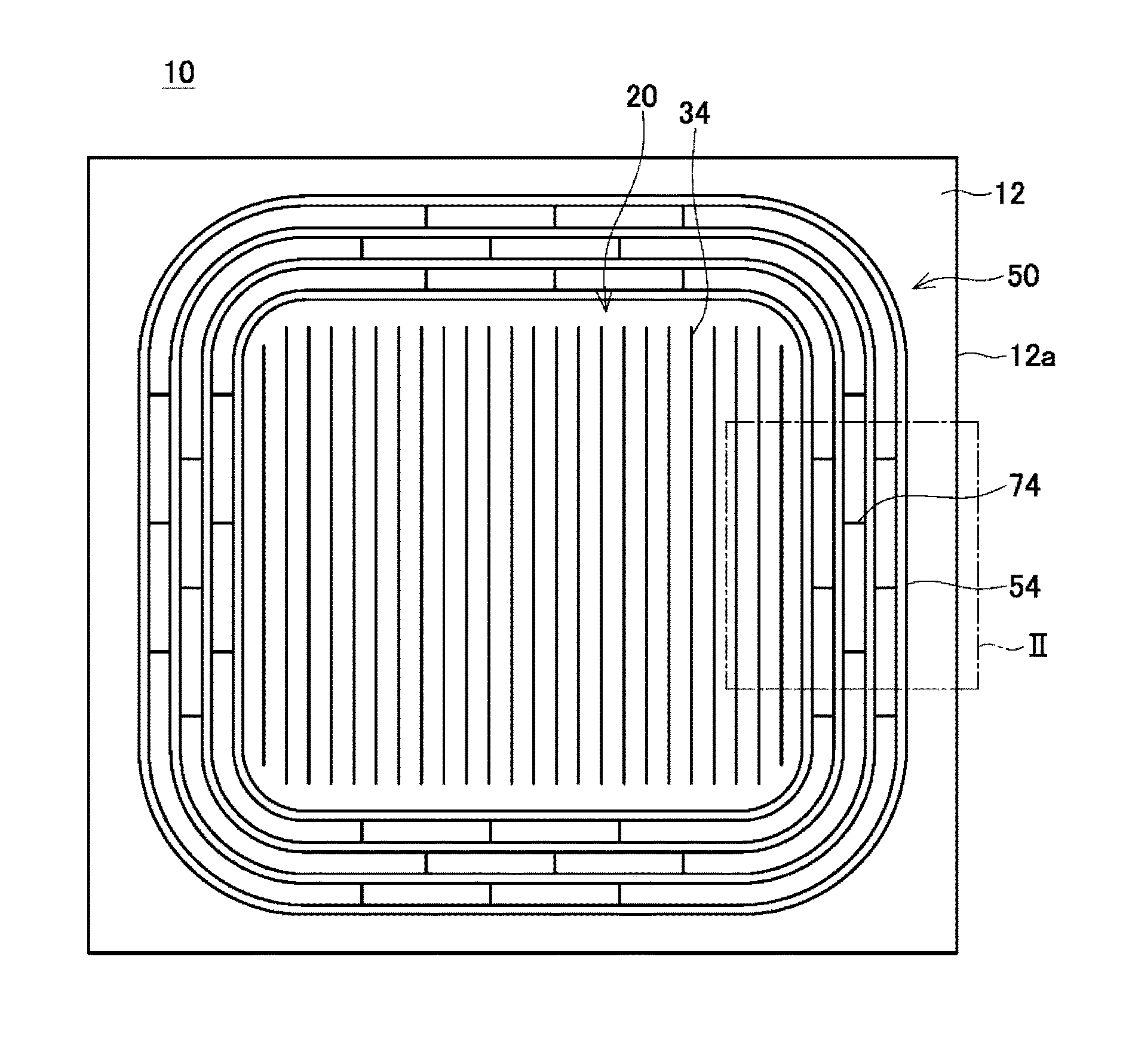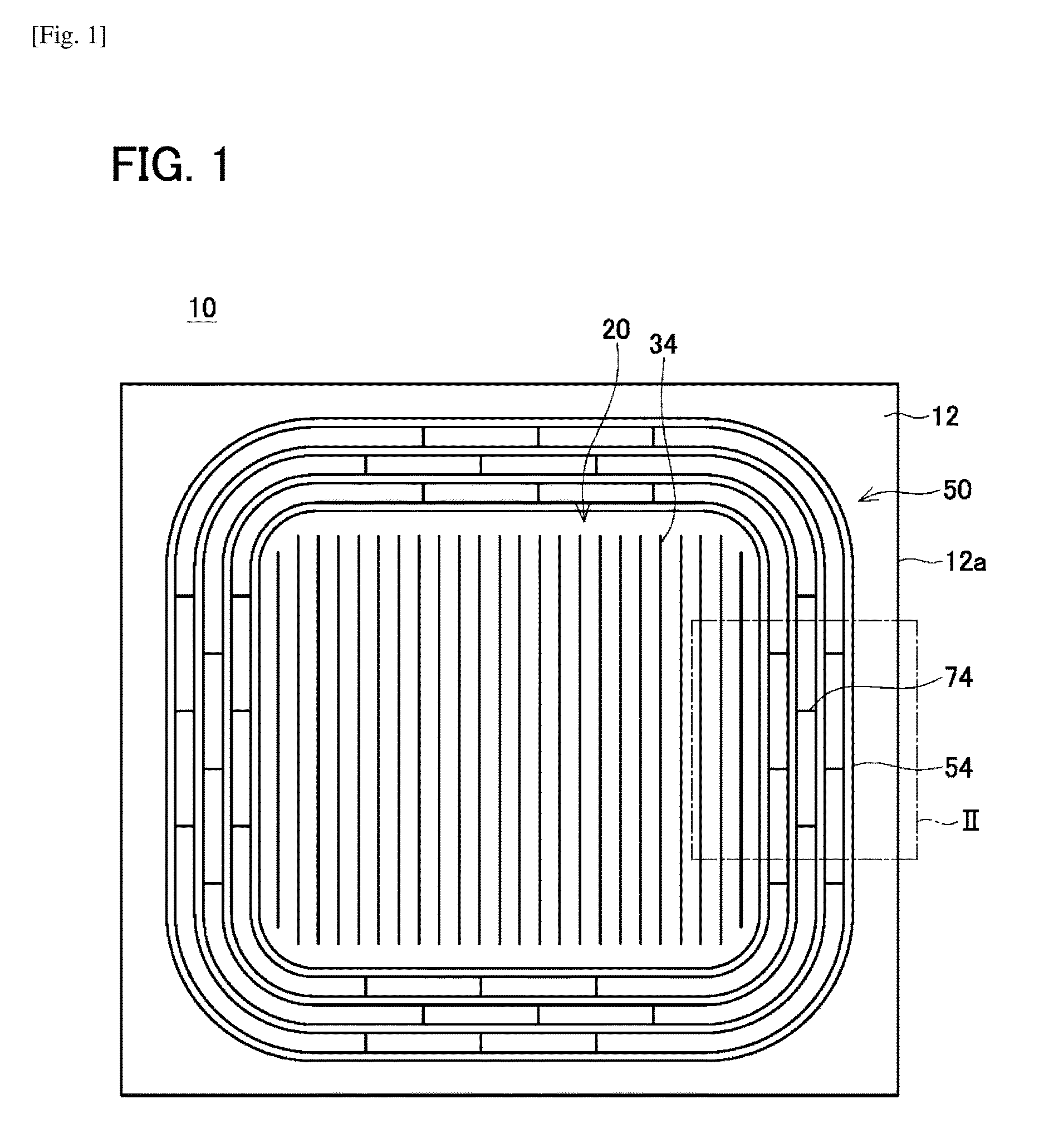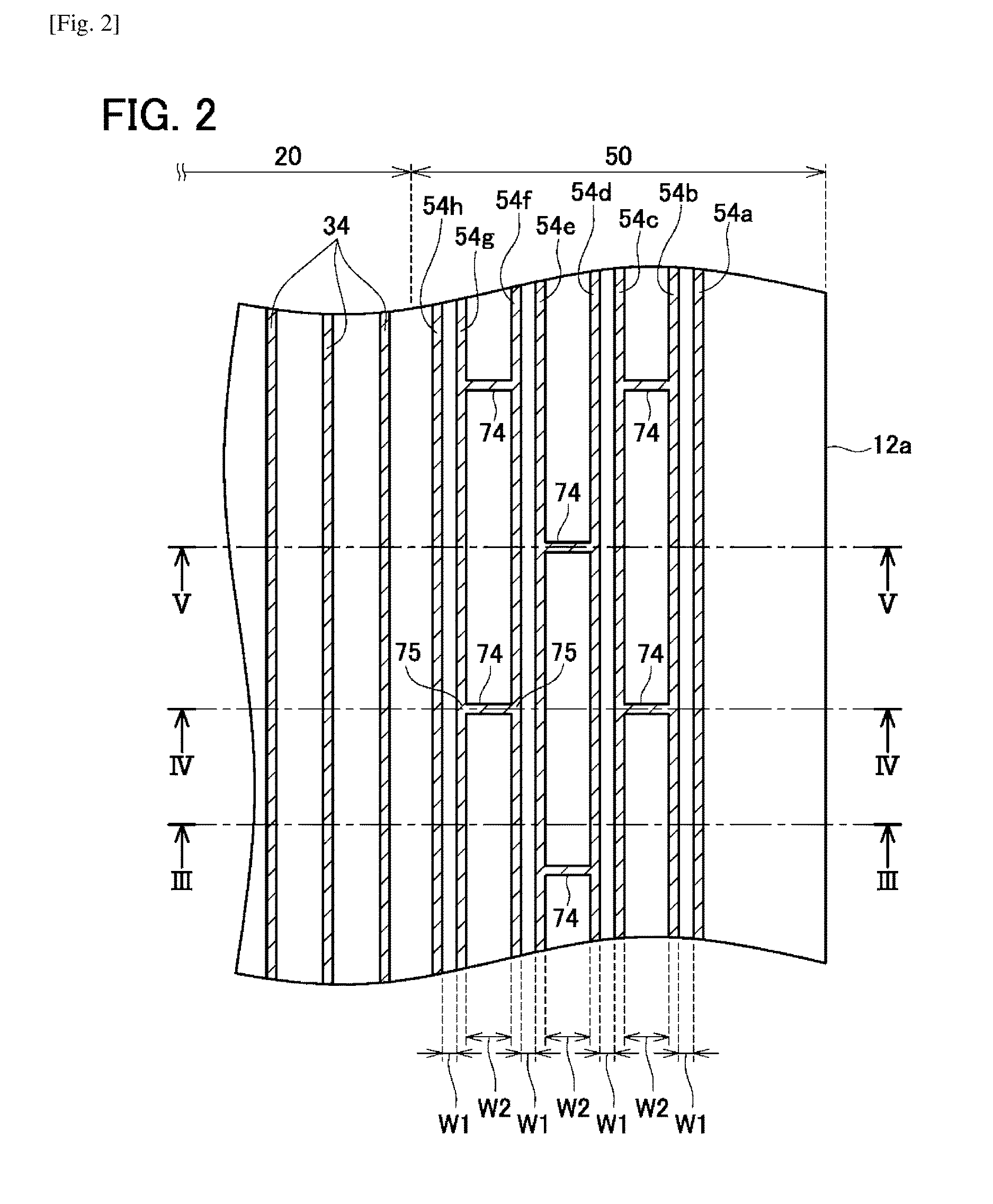Insulated gate type semiconductor device
- Summary
- Abstract
- Description
- Claims
- Application Information
AI Technical Summary
Benefits of technology
Problems solved by technology
Method used
Image
Examples
first embodiment
[0031]The semiconductor device 10 shown in FIGS. 1 and 2 has a semiconductor substrate 12 made of SiC. In FIGS. 1 and 2, an electrode, an insulating film, and the like on the semiconductor substrate 12 are not shown. The semiconductor substrate 12 has a cell region 20 and an outer periphery region 50. In the cell region 20, a MOSFET is formed. The outer periphery region 50 is a region between the cell region 20 and an end surface 12a of the semiconductor substrate 12.
[0032]As shown in FIG. 3, on a front surface of the semiconductor substrate 12, a front surface electrode 14 and an insulating layer 16 are formed. The insulating layer 16 covers the front surface of the semiconductor substrate 12 in the outer periphery region 50. The front surface electrode 14 is in contact with the semiconductor substrate 12 in the cell region 20. In other words, a region in which the front surface electrode 14 is in contact with the semiconductor substrate 12 is the cell region 20, and a region on an...
second embodiment
[0061]In a semiconductor device of the second embodiment, arrangement of the intervening trenches 74 is different from that in the first embodiment, but the other configuration is the same as that in the first embodiment. As shown in FIG. 2, in the first embodiment, the adjacent intervening trenches 74 are arranged in a staggered manner. On the other hand, in the semiconductor device of the second embodiment, as shown in FIG. 12, the adjacent intervening trenches 74 are arranged in straight lines. In other words, each intervening trench 74 extends on an extended line of the adjacent intervening trench 74.
[0062]In the case where the intervening trenches 74 are arranged in the staggered manner as in the first embodiment, as shown in FIGS. 4 and 5, the bottom surface region 56 under the intersection 75 protrudes slightly downward relative to the bottom surface region 56 under the adjacent outer periphery trench 54. For example, as shown in FIG. 4, a lower end of the outer periphery tre...
third embodiment
[0064]A semiconductor device of the third embodiment has no intervening trench 74, as shown in FIG. 14. In the semiconductor device of the third embodiment, as shown in FIG. 15, p-type regions 52a are formed under the front surface region 51. The p-type regions 52a are formed in the partition walls having the width W2. Each p-type region 52a is connected to the two bottom surface regions 56 positioned on both sides thereof. That is, in the semiconductor device of the third embodiment, the two bottom surface regions 56 on both sides of each partition wall having the width W2 are connected to each other by, instead of the bottom surface region 76 under the intervening trench 74, the p-type region 52a expanding from the front surface of the semiconductor substrate 12 to a deep position. Even by such a configuration in which the bottom surface regions 56 are connected to each other by each p-type region 52a, a depletion layer can be extended in the outer periphery region 50, as in the f...
PUM
 Login to View More
Login to View More Abstract
Description
Claims
Application Information
 Login to View More
Login to View More - R&D
- Intellectual Property
- Life Sciences
- Materials
- Tech Scout
- Unparalleled Data Quality
- Higher Quality Content
- 60% Fewer Hallucinations
Browse by: Latest US Patents, China's latest patents, Technical Efficacy Thesaurus, Application Domain, Technology Topic, Popular Technical Reports.
© 2025 PatSnap. All rights reserved.Legal|Privacy policy|Modern Slavery Act Transparency Statement|Sitemap|About US| Contact US: help@patsnap.com



